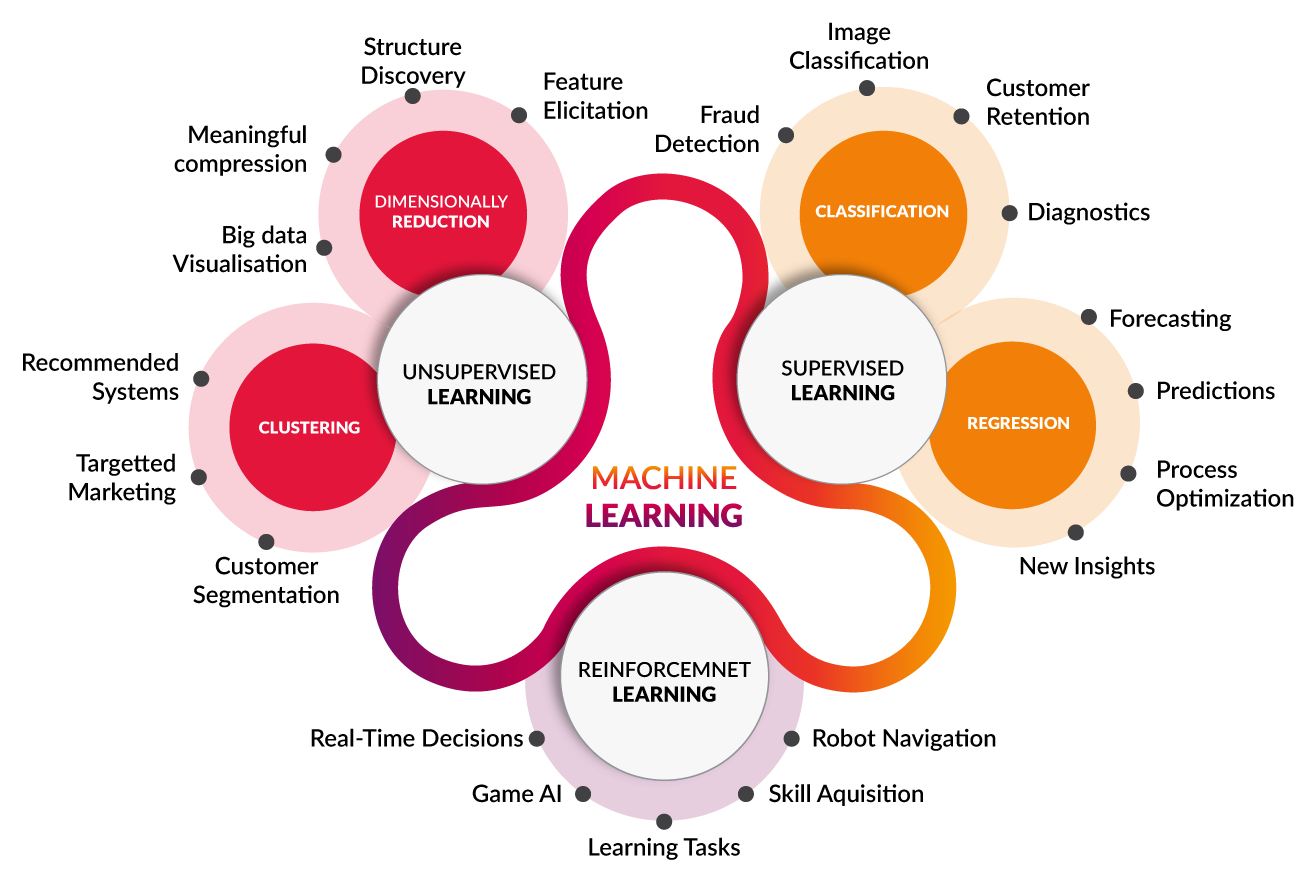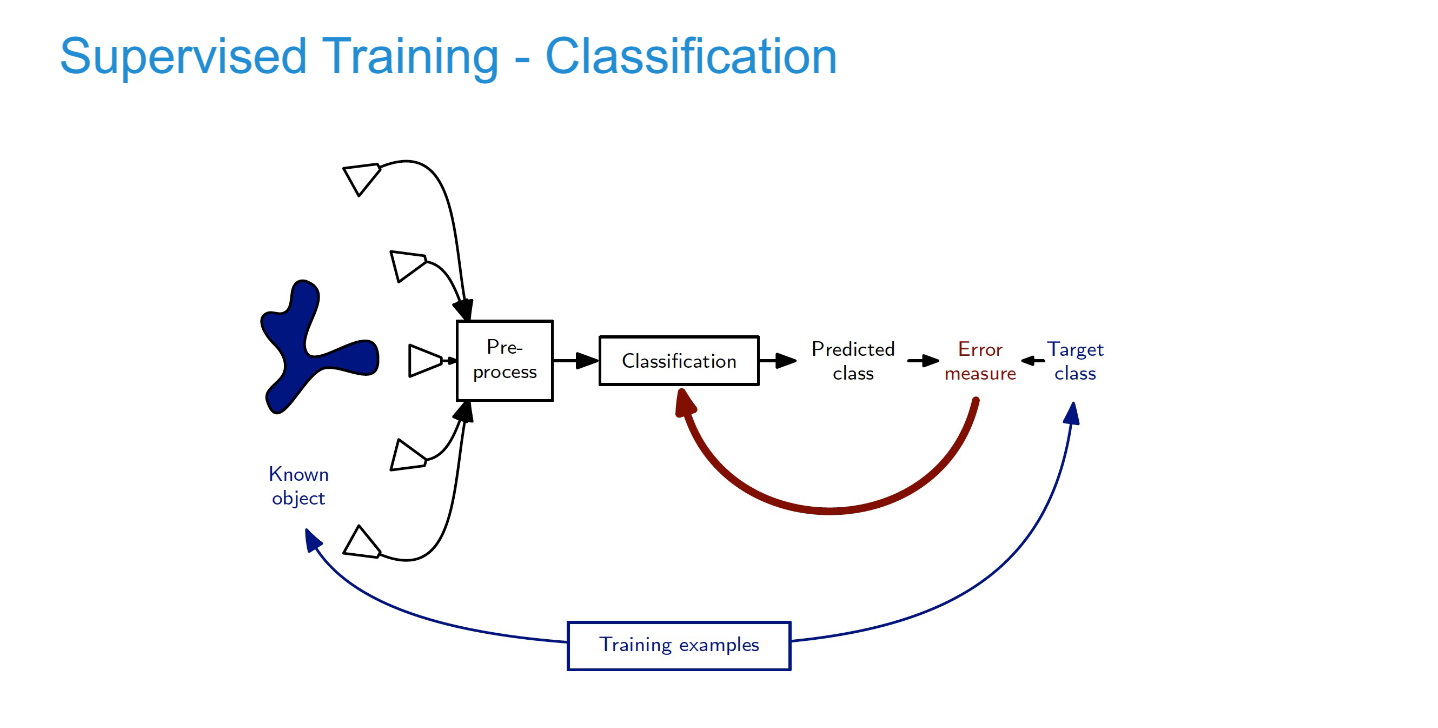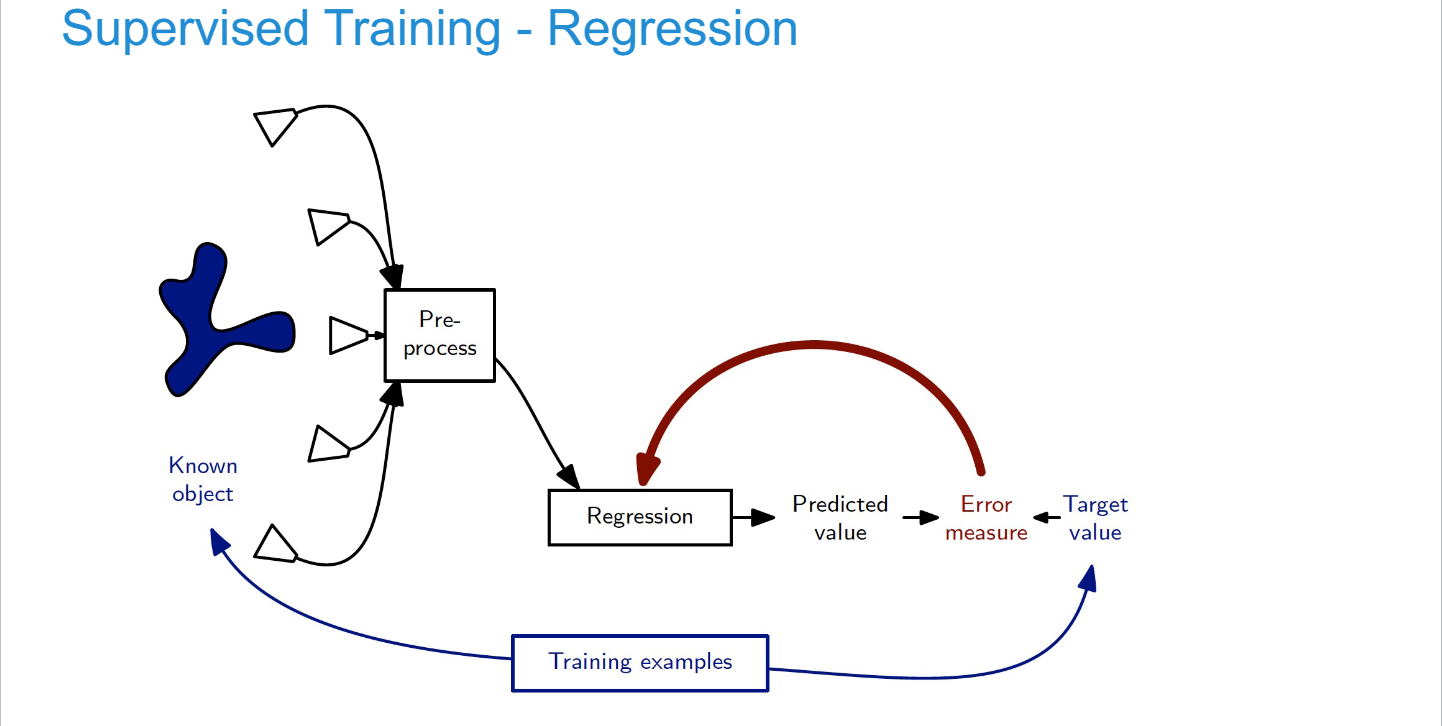Intelligent Systems in Computer Science
Perception
Interaction with environment requires cognitive processes, e.g. computer vision, speech recognition, motion detection, scene analysis, object classification
Decision making
Processing of incoming information, analysis of a situation, selection of possible actions in order to achieve a goal, e.g. path finding, sorting of objects
Learning
Data driven adaptation of the system based on observations only (unsupervised) or together with feedback from the environment (supervised), e.g. classification, regression.
Types of machine learning problems

Unsupervised Learning: input data, no labels
- Clustering: group similar data points
- Density estimation
- Dimensionality reduction
- Outlier/novelty detection
Supervised Learning: labels are provided
- Classification
- Regression
Semi-Supervised learning
- labels for just part of the data
Reinforcement learning
- find a sequence of actions (policy) that reaches a target
Classification vs Regression
Classification: Predict a discrete label from features
Examples:
- Medicine: classify X-rays as \cancer" or \healthy"
- SPAM detection: classify emails as spam or not
- Face recognition, speech recognition,

Remark the picture of from the lecture slides
Regression: Predict a continuous value
Examples:
- Weather forecasting (wind speed, mm, rainall)
- In financial markets: predict tomorrow's stock price from past evolution and external factors
- A robot learning its loccartion in an environment

Semi-supervised Training
Partially labelled data sets, first training based on labelled subset, extend by making predictions for unlabeled data, accept examples with high confidence for next training ... iterative procedure
Unsupervised Training
Clustering
Given a set of data points: partition it into groups such that points within each group are similar (low inter-group variability) and groups are dissimilar (high intra-group variability)